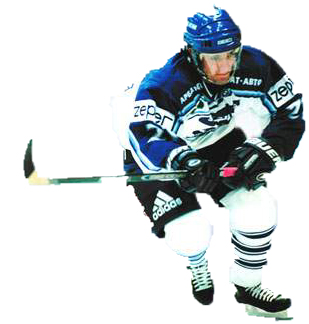APPLIED HOCKEY SCIENCES
 | ||||
 | ||||
In the game of hockey a player that is strong in the weight room is not necessarily a strong player on the ice. To be a factor on the ice depends on a solid base from the legs up. Although upper body strength is required, the real base of support starts in the legs, and midline muscles.
Unfortunately there is a trend in today's hockey training programs for players to be lifting very heavy weights in the range of 3 to 4 reps, all based off of 85% max lift type formulas. Programs like these are being implemented by strength coaches who, to their credit, do have degrees in exercise physiology, etc... but... to their detriment... have never played the game of ice hockey at a high level if at all, and are training hockey players like they are football players. In addition these very heavy weights are being put on the backs of young hockey players that have not been taught proper lifting techniques, and have not developed the proper neural patterns to be be lifting such loads. Placing these types of loads on the bodies of improperly trained players is in fact extremely dangerous. Unfortunately many of these players are getting hurt or developing chronic pain.
In the last ten years, players and coaches may have over-rated the place of heavy weight training in the development of hockey players, almost to the point that when one mentions "work out," people assume your talking about weight training.
"BUILDING BETTER HOCKEY PLAYERS THROUGH SCIENCE"
APPLIED HOCKEY SCIENCES
Applied Hockey Sciences Established Since 1996
"It is impossible to reach the top without abiding strictly to the regime, without a truly Spartan-like attitude towards oneself."
- Anatoli Tarasov
